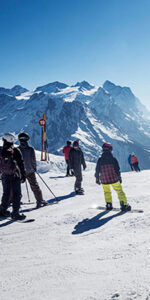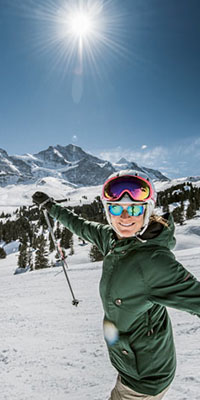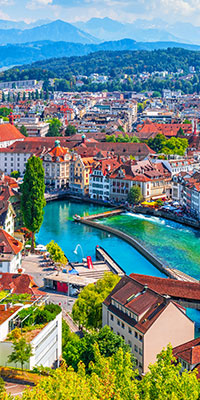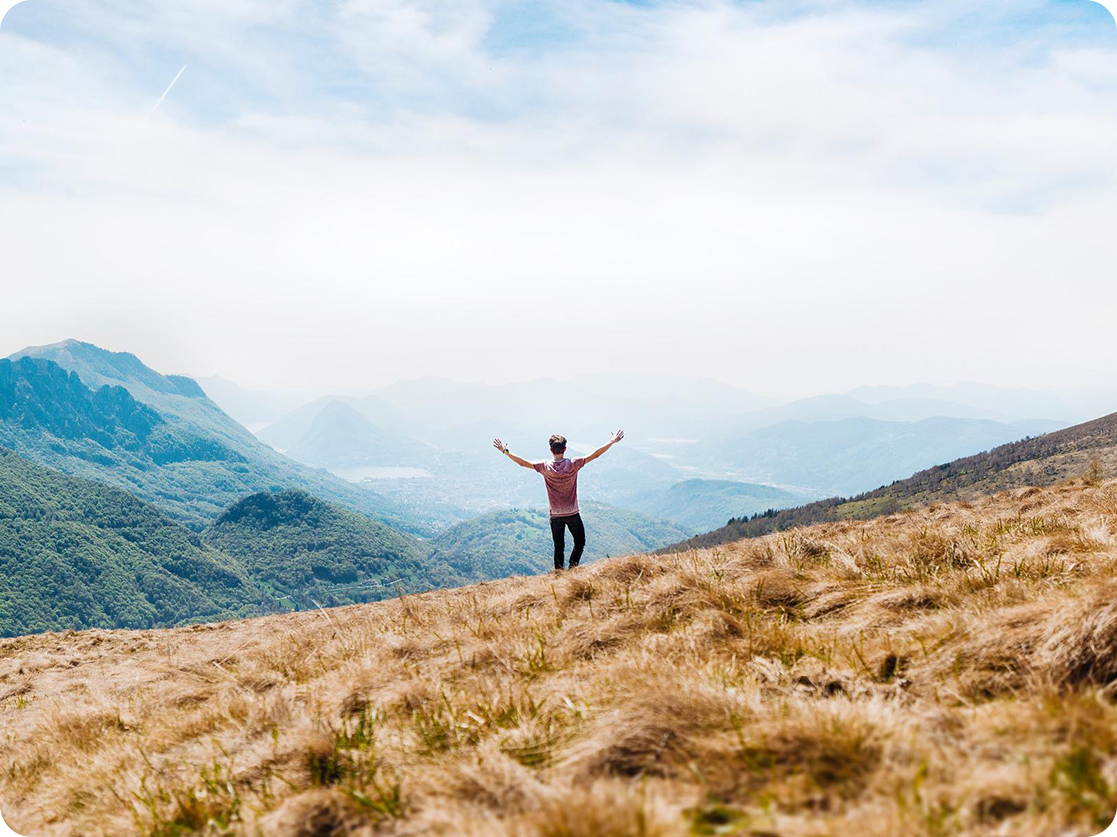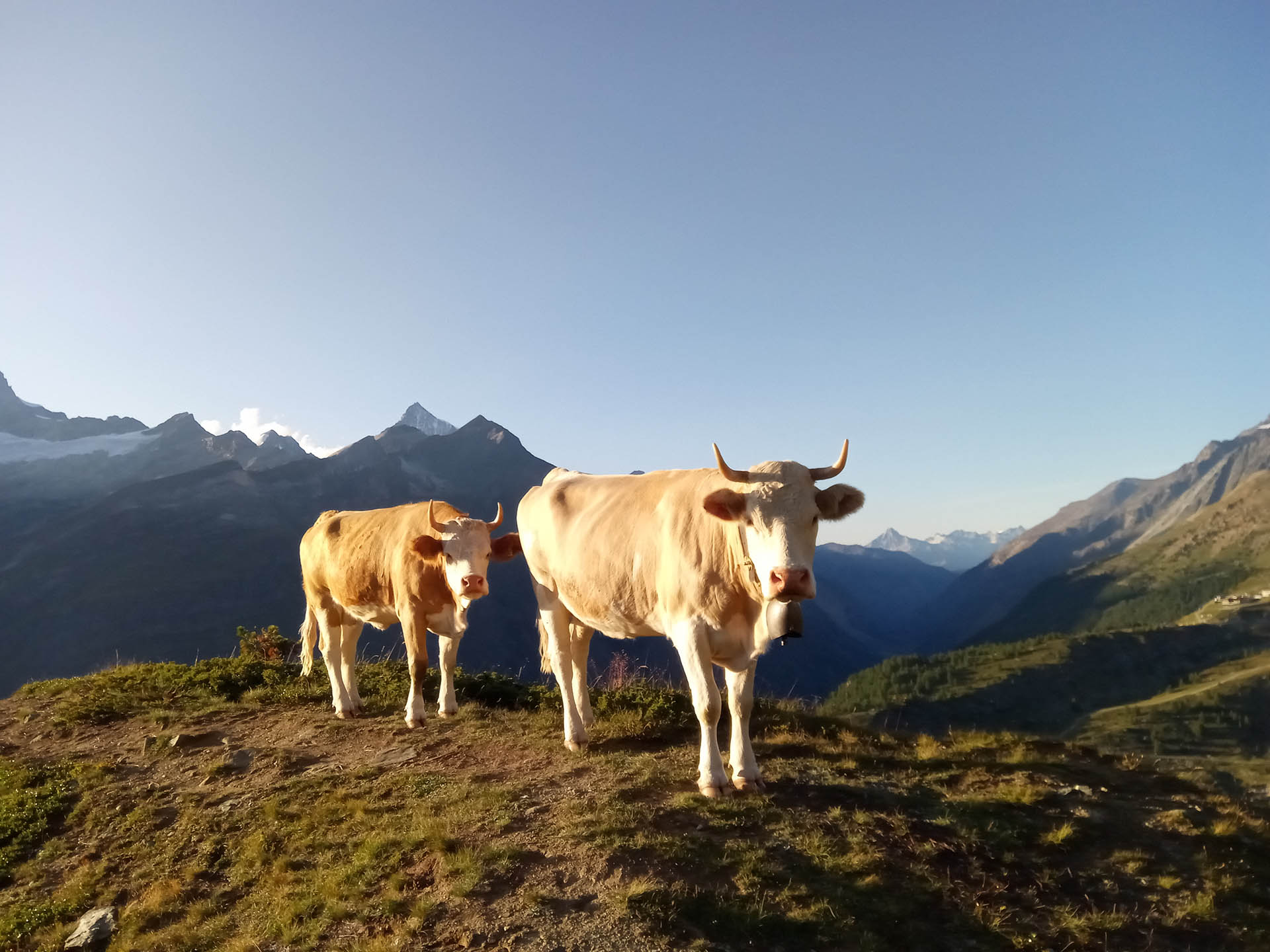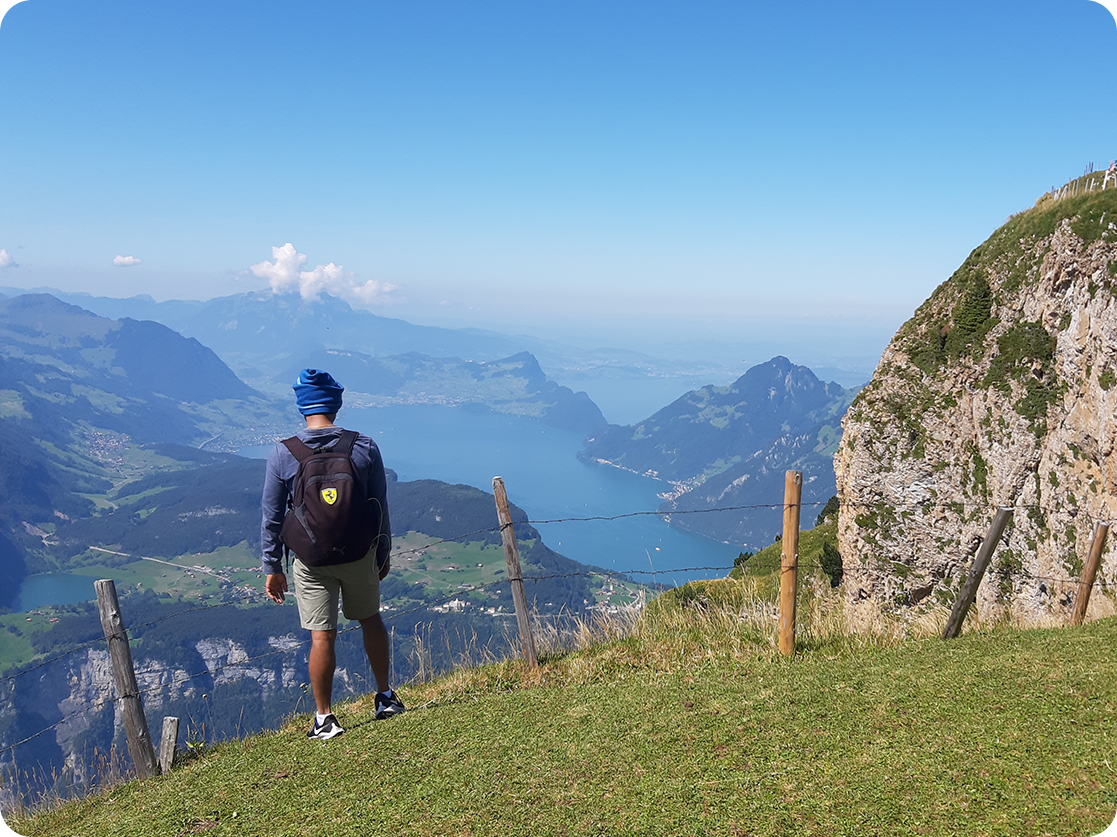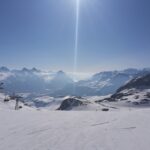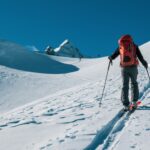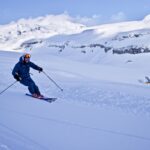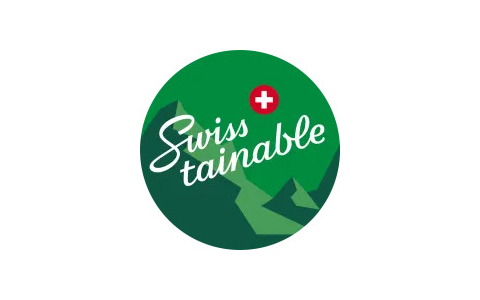How to prevent hiking pain with good preparation?
Are you a hiking fan passionate about long and challenging trails?
Or are you a hiking amateur, happy to experience the Alps occasionally?
Either way, you surely know the hiking pain: sore muscles, tense tendons, and wobbly knees.
In this article, we’re going to share a few tips on how to aid hiking pain and how to prevent it in the future.
Let’s go!
Hiking starts before you leave the house
One of the many joys of hiking is experiencing the beauty of nature up close and personal. However, hiking pain can often overshadow all the excitement, especially if you hike without preparation.
But don’t let that stop you from embarking on a thrilling hike in the Swiss Alps.
Proper clothing
The secret to a successful and pain-free hike is good preparation.
First and foremost, make sure you have the right gear. Good quality hiking shoes and comfortable clothing are essential. Make sure your boots are broken in – hiking in brand-new shoes will 100% result in painful blisters. Make sure your clothes are made of light, breathable materials, and make sure to bring a few extra layers. Remember, many thin layers are better than a few thick ones.
In your backpack
A small first-aid kit and a hydration pack are also important, especially if you’re preparing for a longer hike. And don’t forget to pack enough food and water for the day. Nuts, dry fruits, and chocolate are great energy sources when you need a boost.
Choose the right trail
Next, make sure you choose a trail that suits your fitness level. There are plenty of trails in the Swiss mountains for hikers of all levels, from easy, family-friendly walks to challenging mountain climbs. Do some research beforehand, and make sure you’re comfortable with the length and difficulty of the trail you choose. Schweizmobil is a reliable source of information about hiking trails. Here you can check how the classification of hiking trails in Switzerland works. Choosing a trail that’s too demanding for your abilities will definitely result later in some hiking pain.
“We don’t stop hiking because we grow old –
We grow old because we stop hiking.”
– Finis Mitchel
Once you’re on the trail, take your time and enjoy the journey. The stunning Swiss mountain views are breathtaking, and you won’t want to miss a moment.
Stop regularly to catch your breath and take in the scenery. Remember to stay on the trail and follow all the rules and regulations to protect the fragile mountain environment.
Finally, listen to your body. If you feel pain or discomfort, take a break and stretch. It’s better to take it slow and enjoy the experience than to push yourself too hard and get injured.
In conclusion, hiking in the Swiss mountains is a fantastic experience that everyone should try. With the right preparation and mindset, you can make the most of your outdoor Swiss experience and come back filled with memories of breathtaking mountain vistas and zero hiking pain.
The best tips to minimize pain:
- Get fitted with sturdy, stable boots or trail running shoes.
- Buy shoes/boots that are at a half to one full size larger than your regular shoe size. After several hours of hiking, feet will swell and need room to expand.
- Pre-condition legs weeks before a strenuous hike by doing short hill hikes and strengthening exercises (squats, lunges, step-ups, and step-downs). You can also increase your lactic acid threshold and level of fatigue (thereby lowering the occurrence of sore muscles) by increasing your activity level and training at 85%-90% of your maximum heart rate for at least 20 minutes daily. This will largely reduce your hiking pain in the future.
- Use stretching exercises especially for problem areas such as hamstring, IT band, etc. to increase flexibility.
- Wearing leg braces will help you stabilize the knees as well as to reduce stress. Neoprene braces can be purchased over the counter at any drug store.
- Hydration is definitely one of the most important parts of every hiking adventure. Stay hydrated, eat carbohydrates and protein during as well as after the hike. This can help minimize lactic acid build-up.
- Hiking pole will help you redistribute weight, so you’ll be able to balance and reduce stress on the knees too.
- Another important tip is to learn the technique of heel-to-toe walking so as to make full contact with the heel to the ground.
- Try to control uphill and downhill progression so as not to bound, go too fast, or “pound” the trail. Slightly bend knees when descending. Make a conscious effort to keep weight centered with the knee tracking directly over the toe (no twisting in or out). An automatic response to descending a hill is to lean backward, rather than stay centered. This can result in injury, such as IT Band Friction Syndrome.
How to deal with hiking pain?
- Ice painful or swollen joints and muscles immediately after a hike. If pain persists, continue at intervals for up to 48 hours. Besides, icing will decrease inflammation and reduce swelling and numbness.
- Rest after the hike, but don’t become immobile. Walking or light exercise will keep blood flowing and increase recovery.
- Gentle stretches will certainly help stiff, tight muscles.
- Massage painful muscles with long and smooth movements.
- If needed, use a non-steroidal anti-inflammatory drug (NSAID). Medicines such as ibuprofen will definitely help you reduce pain and inflammation.
- Some hikers benefit from alternating ice packs and heat therapy. However, this should only be done after 48 hours, and the inflammation has subsided. Applying heat immediately after a hike will increase swelling and prolong recovery time.
Important: It should be noted that previously mentioned tips are not intended as a substitute for professional medical treatment or consultation. Therefore, we advise you to always consult with your physician in the case of a serious injury.
However, if you are searching for a hiking destination, hiking guides, and hiking ideas, our team will always be here to help you.
So pack your bags and hit the trails!
Check out our latest Articles:
-
Verbier Ski Packages: Your Ultimate Alpine Adventure24 July 2024/0 Comments
-
-
-
St Moritz Ski Packages: Indulge in Luxury4 July 2024/
-
Experience The Swiss Ski Holidays of Your Dreams26 June 2024/
-
-
Skiing in Zermatt: A Premier Destination12 June 2024/

